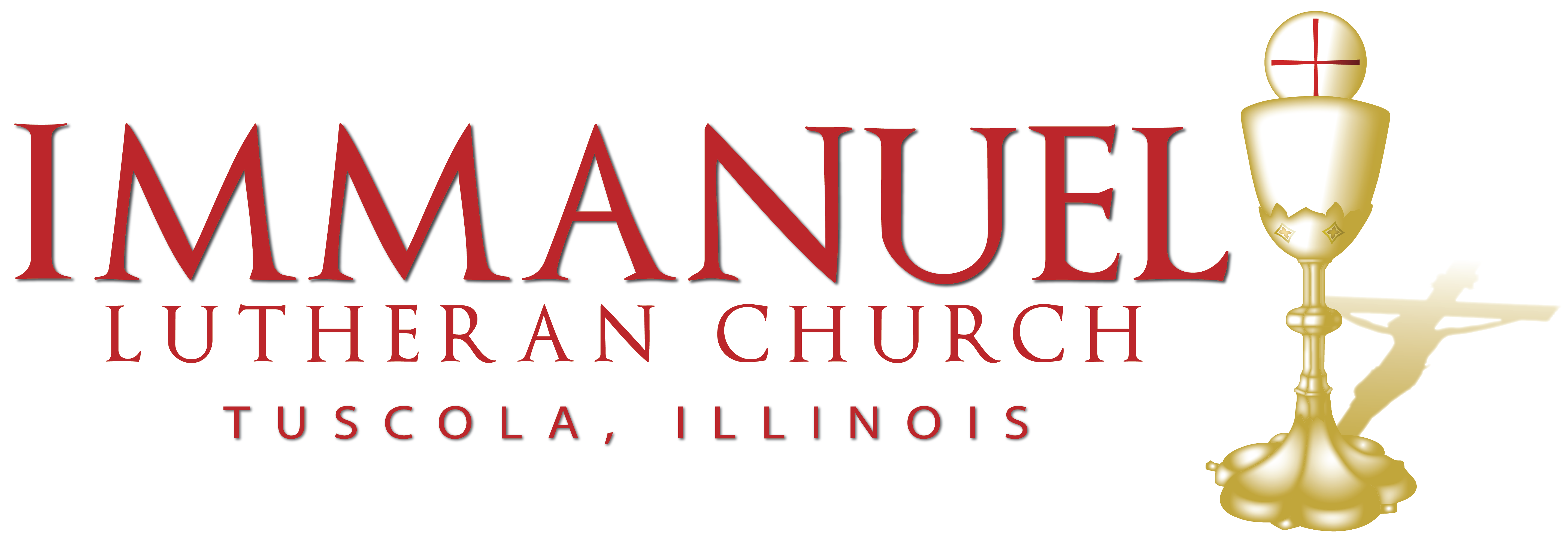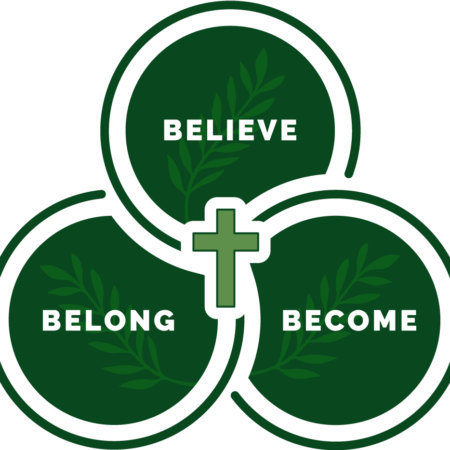Believe . . .
What is using satanic arts by God’s name? Using satanic arts by God’s name is
A. using God’s name in order to perform or claim to perform supernatural things with the help of the devil, such as casting spells, calling up a spirit, fortune-telling, consulting the dead, or other occult practices;
-
- Deuteronomy 18:10–12
- Exodus 7–8
- Acts 19:13–29
B. joining with or seeking the aid of people who practice these and similar satanic arts or worship Satan;
-
- Leviticus 19:31
- 1 Samual 28
C. depending on horoscopes or similar ways to foretell the future.
-
- Ecclesiastes 7:14
Belong . . .
Pray for one another (James 5:16)
- Hoel Family — Tim, Sherrie
- Hoey Family — Luanne, Tim
- Holzrichter Family — Dave, Nancy
- Hostetler Family — Dorothy
- Joergens Family — Barney
Pray for kings and those in authority (1 Timothy 2:2)
- Local — Craig Hastings (Police Chief)
- State — Susana Medoza (State Comptroller)
- National — Tom Vilsack (US Secretary of Agriculture)
Pray for the Gospel to spread among all peoples (Matthew 9:37–38)
- South Asia Lutheran Mission — Rev. and Mrs. Edward Naumann
- Romania — Rev. and Mrs. David Preus
- Japan — Rev. and Mrs. Daniel Jastram
Become . . .
From the Spring 2023 For the Life of the World
Servants Formed to Reach: The Witnessing Community
Mormon missionaries happened to come to the home of a classmate during our first year of studies at Concordia Theological Seminary. Although he was much further along in his training (a full quarter ahead of me in his studies), my classmate didn’t hesitate to call on me for assistance. He had heard that I came to the Seminary from a Mormon community in Arizona and was well-versed in witnessing to Mormons. For their part, the Mormon missionaries were eager to have a crack at the Lutheran student who had lived in the shadow of one of their revered temples.
Several members of our class were able to meet with these young and zealous missionaries multiple times before one of the Mormons started to show signs of embracing what we were teaching. Unfortunately, the other missionaries escorted her out of my home, and they never returned. We were disappointed that the opportunity to continue to share God’s Word with them was over. We were also disappointed that it brought an end to this intimate and intense shared experience for us. The bonding that took place through that experience continues to this day.
Witnessing to those Mormon missionaries with my classmates provided some valuable insights about witnessing as a member of a community of believers. Some years later, I was able to put those insights into practice as the pastor of evangelism for a congregation in Florida. Recognizing that the work of evangelism didn’t and shouldn’t rest solely on my shoulders, I started teaching the members of the congregation a relational, contextual approach to witnessing. With 1 Peter 2:9 as a guiding light, I embraced my role of equipping the Priesthood of Believers to be the witnesses they are called to be. Once again, the value of having a community of witnesses was apparent. People I could not reach as a parish pastor were already woven into the lives of the members of our congregation. Equipping those members multiplied many times over what little a pastor of evangelism could do on his own.
Equipping people to be active and effective witnesses of Jesus came with its own challenges. The only Lutheran evangelism resource available at the time was Dialogue Evangelism 2 (DE2). While DE2 had been a useful resource for many years, we found that training people to go door-to-door to witness to strangers was ineffective in our context. We realized it was time for an approach to evangelism that addressed our current culture and context while being faithful to Lutheran doctrine and practice. Creating a resource was a challenging undertaking. Fortunately, the sound theological training I received at CTSFW and experiences like witnessing to the Mormon missionaries with my classmates provided the foundation for developing that resource.
A decade or so after creating the evangelism resource for equipping people in the parish I served, I was called to the Office of National Mission of The Lutheran Church—Missouri Synod (LCMS) and tasked with creating an evangelism resource. It was a rare and tremendous opportunity to create a resource for evangelism that was Lutheran from the ground up. Taking the wider context of the Synod into consideration while developing this resource, I found that the theological training and experiences of CTSFW were indispensable for crafting what is now the Every One His Witness evangelism program.
Every One His Witness was designed with the Priesthood of Believers in mind. The resource’s purpose is to “equip Lutherans to be Third Article witnesses telling the Second Article story using their First Article gifts.” It makes a clear and important distinction between the work we do as the Church Gathered (i.e., outreach) and the work we do as the Church Scattered (i.e., witness). But it dismisses the idea that evangelism is a work that we do on our own. Even when an individual believer is witnessing without another believer present, he or she remains part of a witnessing community. That individual brings the training, catechesis, prayers, and encouragement of many other Christians into each witnessing situation. Even more so, the individual is accompanied by the Holy Spirit, whose constant presence binds us to the community of believers. We are never alone when witnessing, because, as members of the body of Christ, we are never alone.
The idea that we are on our own when witnessing is one of many bad ideas about evangelism that have caused God’s people guilt, shame, and angst over their call to share the Good News of Jesus with lost people. Unfortunately, some of those bad ideas are also popular ideas—even among Lutherans. Sadly, the influences of other confessions have shaped (actually, misshaped) our understanding of witnessing. While we can clearly see the false teachings of “decision theology” that have influenced some evangelism approaches (e.g., getting someone to pray the “sinner’s prayer”), other false teachings are more subtle and have found their way into our thinking about evangelism. One of those ideas is that the work of witnessing is done once we’ve told someone about Jesus—in other words, witnessing in isolation as though evangelism were solely a “me and Jesus and this unbeliever” endeavor.
Witnessing in isolation negates the importance of being a part of a witnessing community. It promotes the idea that talking about Jesus with your nonchurched neighbor at a backyard barbecue or hanging out with a nonbeliever at a coffee shop to have a “spiritual conversation” is somehow sufficient. It fails to recognize that the work of a witness involves both bringing the Word of Christ to people and then bringing people to the Word of Christ—that is, to connect the people to whom we witness to a community that gathers around a local altar and pulpit to continue to receive the good gifts of God.
Witnessing in isolation is often piously presented as being more focused on “Kingdom growth” than on congregational growth. But the reality is that the Kingdom grows (when and where God wills) when congregations grow. The Kingdom is not made up of disconnected individuals, but of the one body of Christ called, gathered, enlightened, sanctified, and kept by the Holy Spirit. This same Holy Spirit calls us to be “Third Article witnesses telling the Second Article story using their First Article gifts” not as a burden, not as obligation, and not in isolation, but as a joyful privilege as part of a community of witnesses who are loved, redeemed, and sanctified.
Many years and many miles have passed since we were first-year seminary students witnessing to four Mormon missionaries in my living room. But I clearly remember what brought the one young lady to tears as she realized the truth of what we were sharing: my classmate stepping through each phrase of the Apostles’ Creed and then asking “Do you believe this is true?” It was an approach that I (the well-versed witness to Mormons) had not considered. That experience opened my eyes to the value and strength of being a part of a witnessing community and was the beginning of finding comfort, strength, and joy in knowing that, as Christ’s witness, I am never alone.


 We BELIEVE that Jesus Christ purchased and won us from sin, death, and the devil with His own blood. Therefore, we BELONG to Him and in Him we belong to one another, so that we BECOME like Him as we mature in faith toward God and fervent love toward one another.
We BELIEVE that Jesus Christ purchased and won us from sin, death, and the devil with His own blood. Therefore, we BELONG to Him and in Him we belong to one another, so that we BECOME like Him as we mature in faith toward God and fervent love toward one another.
0 Comments